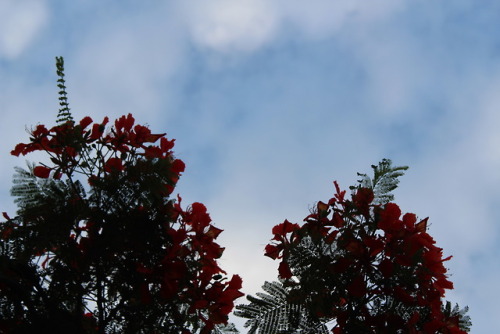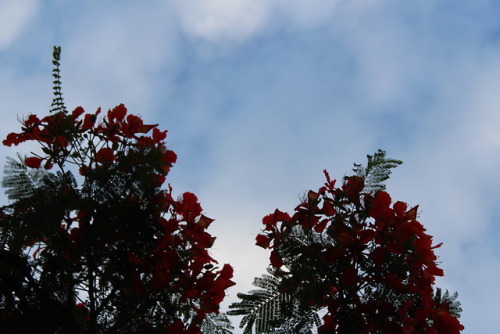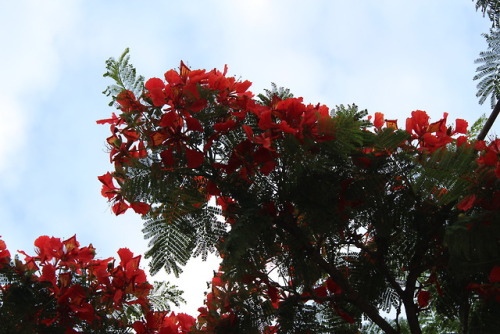That View Though. Oval Storms Dot The Cloudscape In This Enhanced Color JunoCam Image Of Jupiter’s

That view though. Oval storms dot the cloudscape in this enhanced color JunoCam image of Jupiter’s south pole.
This citizen scientist-processed image was taken on Dec. 11, 2016, from an altitude of about 32,400 miles above the planet’s cloud tops.
More Posts from Monecky and Others






































You’ve just crossed over into the Twilight Zone. This image captures the swirling cloud formations in Jupiter’s terminator – the region where day meets night.
This image is one in a series of images taken in an experiment to capture the best results for illuminated parts of Jupiter’s polar region. For JunoCam to collect enough light to reveal features in Jupiter’s dark twilight zone, the much brighter illuminated day-side of the planet becomes overexposed with the higher exposure.




On that day in 1957 was launched the satellite Sputnik 1, the Earth’s first artificial satellite.
The Soviet Union launched it into an elliptical low Earth orbit on 4 October 1957, orbiting for three weeks before its batteries died, then silently for two more months before falling back into the atmosphere. It was a 58 cm (23 in) diameter polished metal sphere, with four external radio antennas to broadcast radio pulses. Its radio signal was easily detectable even by radio amateurs and the 65° inclination and duration of its orbit made its flight path cover virtually the entire inhabited Earth. This surprise success precipitated the American Sputnik crisis and triggered the Space Race, a part of the Cold War. The launch ushered in new political, military, technological, and scientific developments.
read more & video



















-
 spaxey reblogged this · 5 years ago
spaxey reblogged this · 5 years ago -
 singularity-1-800 liked this · 6 years ago
singularity-1-800 liked this · 6 years ago -
 franquikoy liked this · 6 years ago
franquikoy liked this · 6 years ago -
 refletchier liked this · 6 years ago
refletchier liked this · 6 years ago -
 jovany1 liked this · 6 years ago
jovany1 liked this · 6 years ago -
 immortal69sworld-blog liked this · 6 years ago
immortal69sworld-blog liked this · 6 years ago -
 nandaolivalove liked this · 6 years ago
nandaolivalove liked this · 6 years ago -
 monecky reblogged this · 6 years ago
monecky reblogged this · 6 years ago -
 monecky liked this · 6 years ago
monecky liked this · 6 years ago -
 whimsyartisansoap liked this · 6 years ago
whimsyartisansoap liked this · 6 years ago -
 soft-emo liked this · 6 years ago
soft-emo liked this · 6 years ago -
 o-z-o-n-o reblogged this · 6 years ago
o-z-o-n-o reblogged this · 6 years ago -
 sunlightxg liked this · 6 years ago
sunlightxg liked this · 6 years ago -
 d-e-s-v-a-n-e-c-e-r reblogged this · 6 years ago
d-e-s-v-a-n-e-c-e-r reblogged this · 6 years ago -
 mi-dulce-ansiedad liked this · 6 years ago
mi-dulce-ansiedad liked this · 6 years ago -
 s-o-b-e-i-t reblogged this · 6 years ago
s-o-b-e-i-t reblogged this · 6 years ago -
 the-importa-un-pico reblogged this · 6 years ago
the-importa-un-pico reblogged this · 6 years ago -
 darkgrace liked this · 6 years ago
darkgrace liked this · 6 years ago -
 essentialparallels liked this · 6 years ago
essentialparallels liked this · 6 years ago -
 oopsadaisy182 reblogged this · 6 years ago
oopsadaisy182 reblogged this · 6 years ago -
 oopsadaisy182 liked this · 6 years ago
oopsadaisy182 liked this · 6 years ago -
 brendia-t-stuff liked this · 6 years ago
brendia-t-stuff liked this · 6 years ago -
 artirov liked this · 6 years ago
artirov liked this · 6 years ago -
 nonecolpadilluviasepiove liked this · 6 years ago
nonecolpadilluviasepiove liked this · 6 years ago -
 wetpiles liked this · 7 years ago
wetpiles liked this · 7 years ago -
 b-g-s liked this · 7 years ago
b-g-s liked this · 7 years ago -
 viewgalaxy-blog liked this · 7 years ago
viewgalaxy-blog liked this · 7 years ago -
 catoruuu liked this · 7 years ago
catoruuu liked this · 7 years ago -
 jayinneon liked this · 7 years ago
jayinneon liked this · 7 years ago





